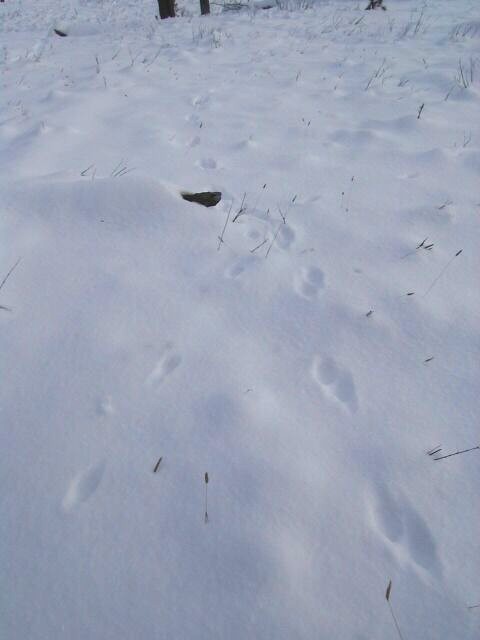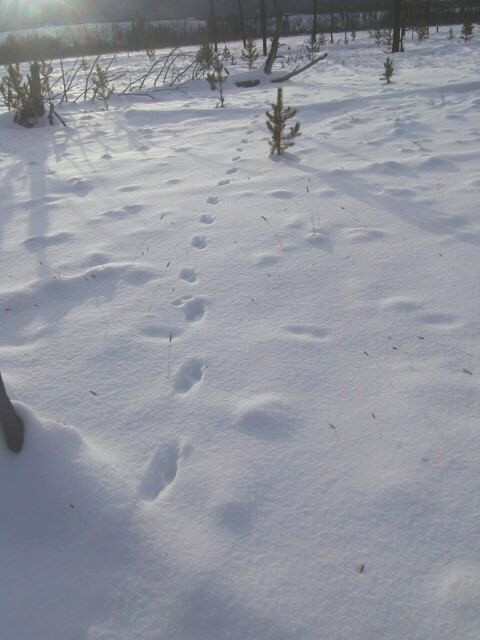

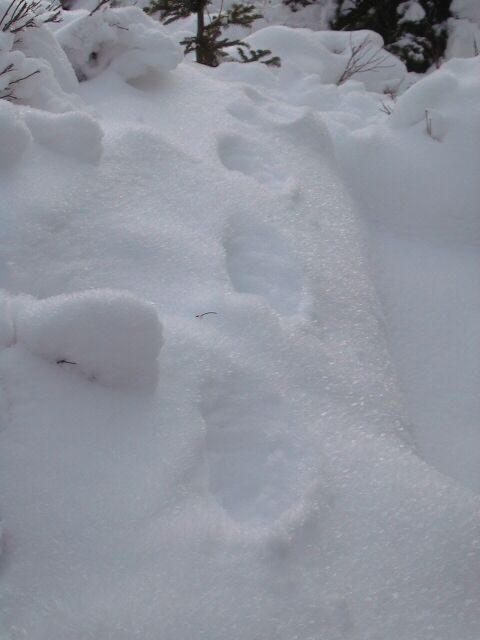
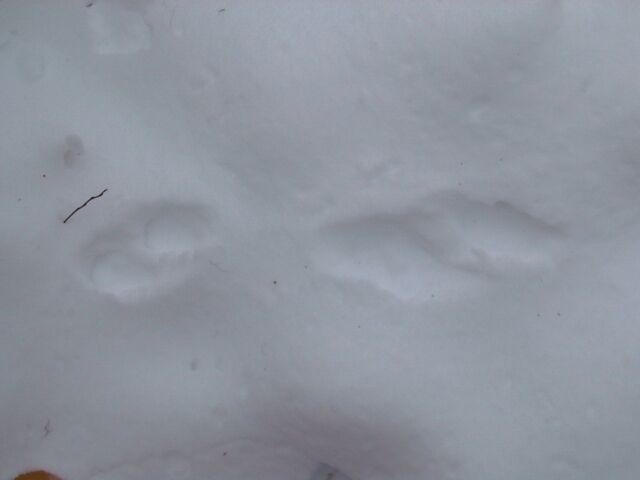
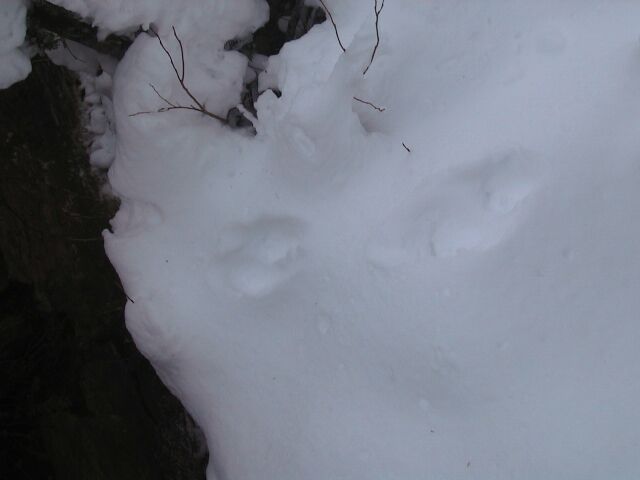
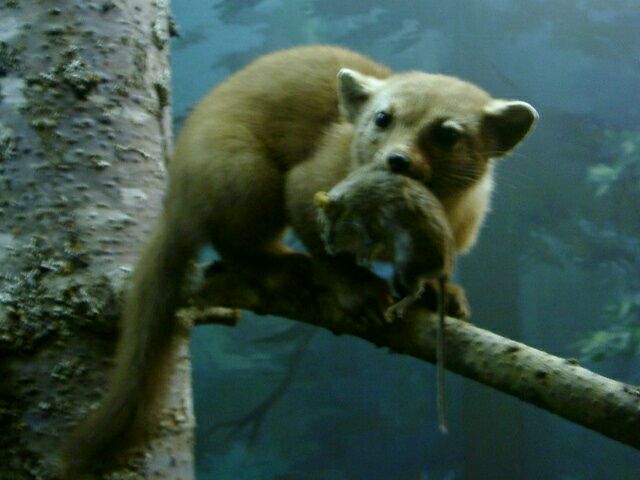
The Pine (or American) Marten (Mustelid americana) is found in mature coniferous forest throughout the western states and Canada. Marten are often used as an indicator species due to this dependence on mature forest. Dead trunks and branches are important since they provide cover for rodents. Contrary to conventional wisdom, biologists now know that the marten diet consists primarily of voles rather than squirrels, though it is an opportunistic feeder.
While the marten is about the same size as a mink, the latter is seldom found far from water and is not much of a climber. The marten has a buff breast spot rather than the white of a mink and longer ears.
Winter is a good time to track the marten. The,gait is quite distinctive though individual tracks are more difficult to discern. The photos included here were taken from trips to Mt. Hood (OR), the Gifford Pinchot Forest (WA), Glacier National Park (MT), and Condon (MT).
I found this marten above timberline on Mt. Hood near Portland, OR. The print is typical mustalid with 5 toes arranged asymmetrically.


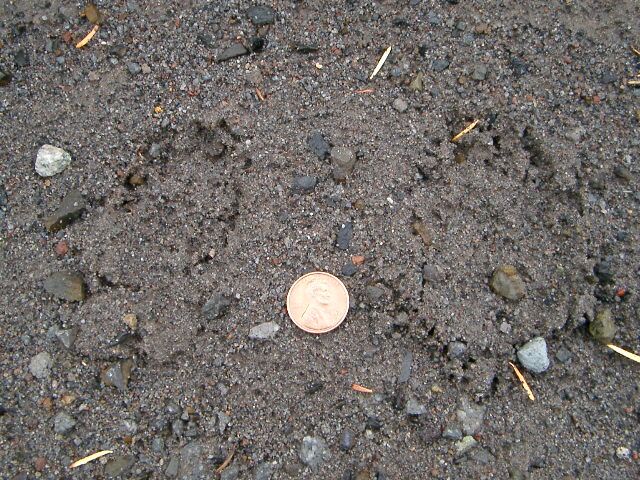
In powdery snow, the marten does not make a very clear imprint in the snow but the overall pattern is quite distinctive. Here are a couple individual prints.
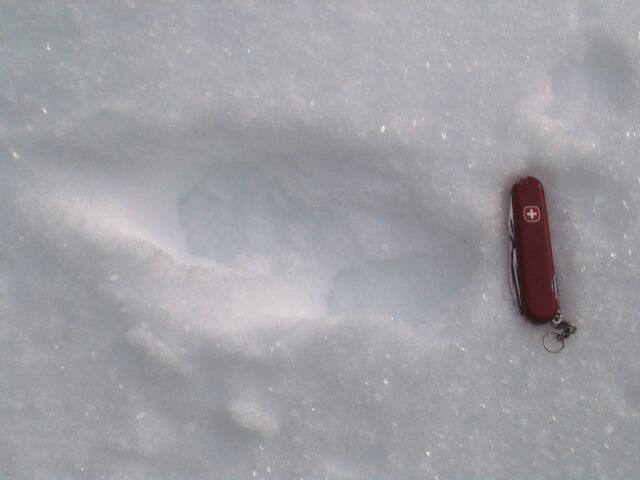
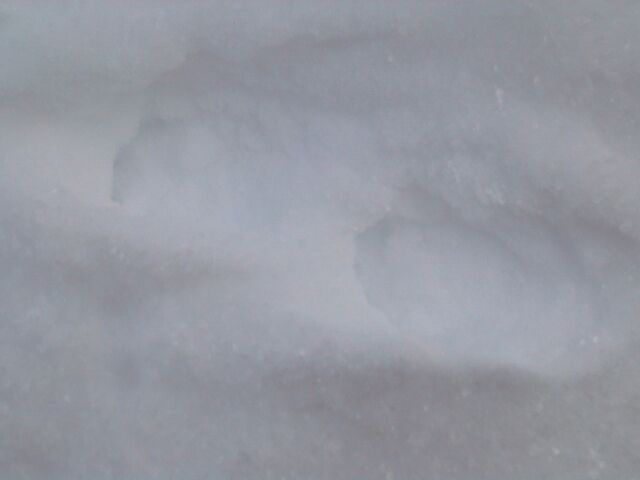





At times the marten switches to a 3x3 gait.

However, a diagonal stride is also possible.
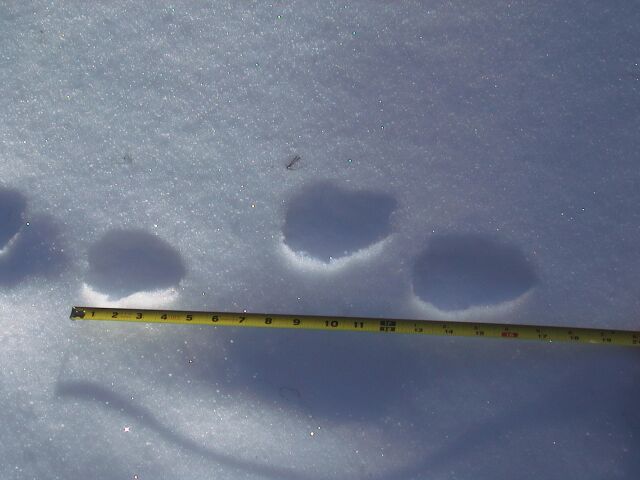
The next photos demonstrate that marten can use slides in the winter. This was a steep hill with fresh powder over a hard layer of icy snow. I have seen no reference to slides in the literature on marten (though their distant cousin, the river otter, is known to use slides).
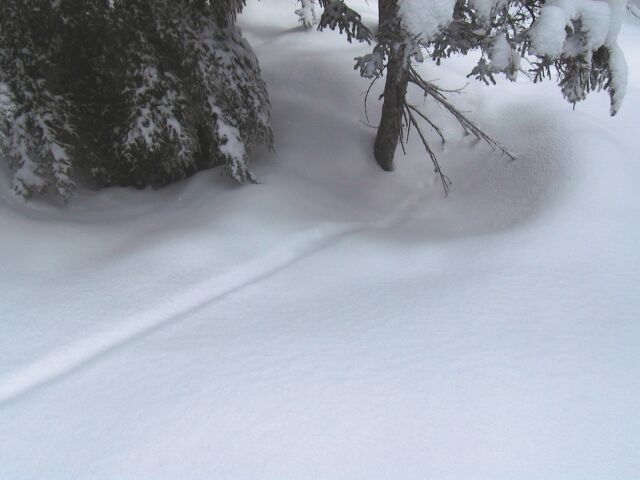

Here is a comparison of ermine and pine marten I found along the North Fork of the Flathead in Glacier National Park.
